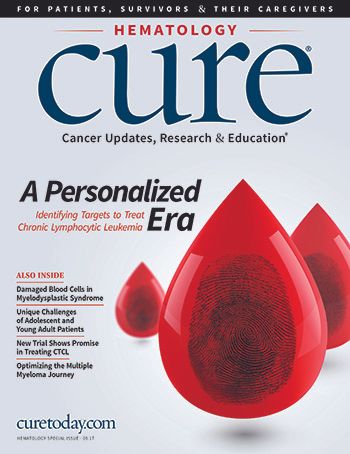Publication
Article
Treatment Stages for a Rare Leukemia
Author(s):
THERE ARE THREE STAGES of treatment for acute promyelocytic leukemia: induction therapy, consolidation therapy and maintenance therapy.
THERE ARE THREE STAGES of treatment for acute promyelocytic leukemia: induction therapy, consolidation therapy and maintenance therapy.
Induction therapy refers to the start of treatment with all-trans retinoic acid (ATRA) and another agent, usually arsenic, following one of several different regimens. Because of the recent findings about arsenic’s superiority to chemotherapy, most treatment regimens today will be intravenous arsenic trioxide (0.15 mg/kg/ day until bone marrow remission) with ATRA (45 mg/m2/day, taken in two doses).
Regimens for highrisk patients will also include daunorubicin (or possibly idarubicin) plus cytarabine.
Consolidation therapy, determined based on a patient’s risk of remission, aims to bring a patient into molecular remission. The ATRA/ arsenic regimen typically includes a five-day cycle of arsenic every other month for four cycles along with the same daily ATRA doses during two weeks a month for seven cycles. A reverse transcription polymerase chain reaction test to detect the PML-RARa protein determines whether a patient has achieved molecular remission. If oncologists suspect relapse, they may conduct a bone marrow analysis to look for evidence of disease.
Disagreement exists regarding whether maintenance therapy after molecular remission is beneficial for patients. A review of 10 trials, published in 2013 and involving over 2,000 patients, found that maintenance therapy increased the amount of time people remain free from disease, but it did not increase overall survival. The review also found that any maintenance treatment, particularly treatments involving chemotherapy, are more toxic.





